© British Army in Hameln.com / Arnd Wöbbeking
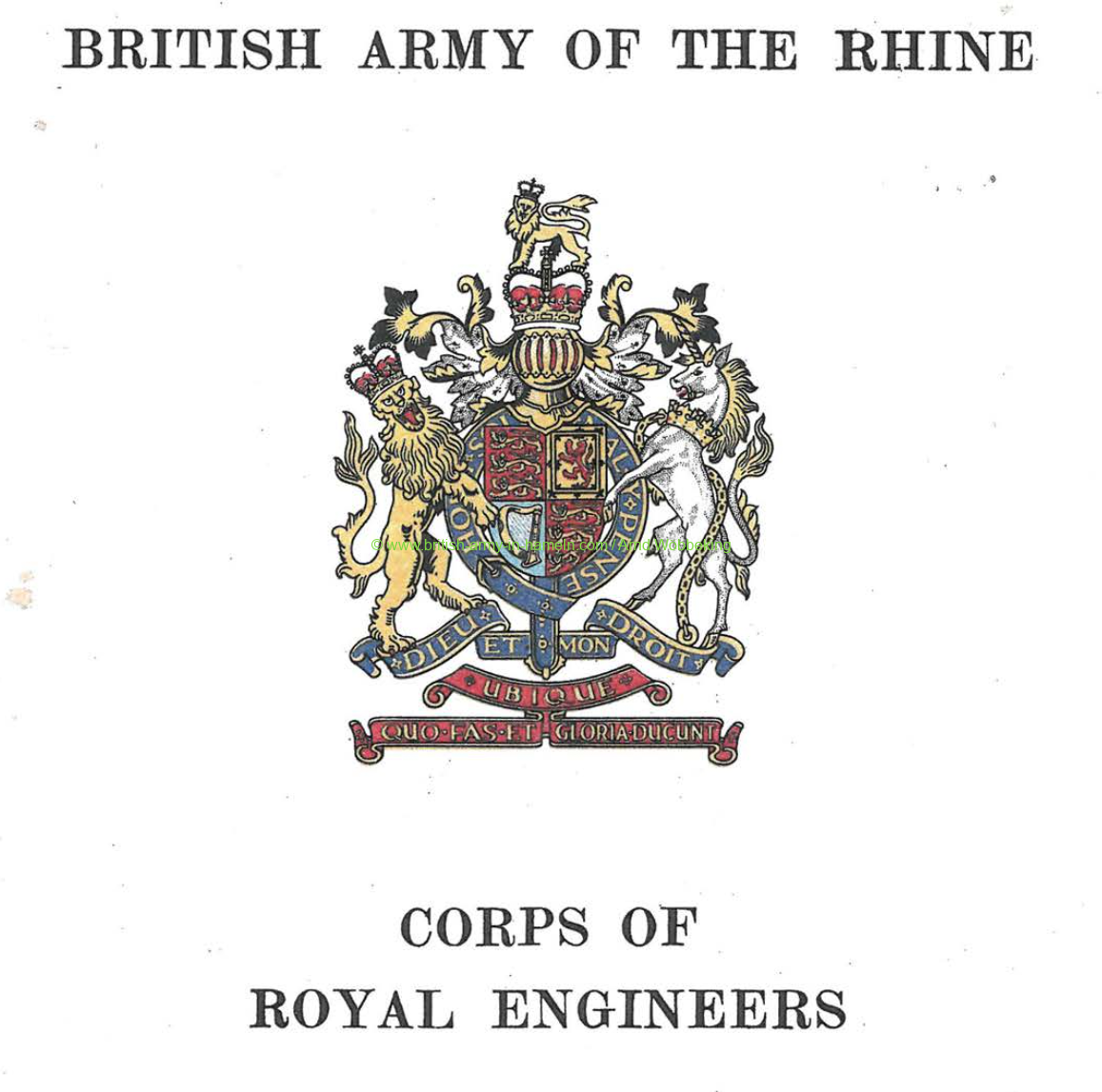
🇬🇧 1958/09/18 🇬🇧
Bridging and Rafting Demonstration at Ohr on the River
By 1958, the Cold War was in full swing. The British Army was searching for new, more efficient, faster, and at the same time safer bridge and ferry systems to enable the rapid transport of armoured vehicles, equipment, and troops across water obstacles.
With the advent of the nuclear age, the doctrine of military bridge construction changed fundamentally. It was no longer possible to concentrate large quantities of equipment near a crossing point and build bridges there through the massed deployment of personnel. The principles of dispersal now applied here too – as in all areas of nuclear warfare – though they were considerably more difficult to implement.
However, British bridge designers found a solution: they developed systems in which the bridge components could be transported on heavy vehicles and assembled or prepared several kilometres away from the actual crossing site. Thus, by the standards of the time, only a small number of men were required to launch the individual elements into the water and connect them into a bridge or a ferry.
This principle formed the basis of both the Light Assault Floating Bridge (LAFB) and the Heavy Assault Floating Bridge (HAFB) – systems that were presented during the following demonstration.
On Thursday, 18 September 1958, the Royal Engineers conducted an impressive “Bridging and Rafting Demonstration” on the NATO training ground at Ohr Park, close to the manor of the same name at Ohr on the River Weser.
From 10:30 a.m. onwards, several bridge systems were demonstrated on the Weser in active use:
• Light Assault Floating Bridge
• Heavy Assault Floating Bridge
• Heavy Girder Bridge
One element of the Heavy Girder Bridge still stands today as a memorial to the British troops in the former Bailey Park in Hamelin, at Reimerdeskamp.
Alongside the demonstrations, experienced officers explained the construction, operation, and respective advantages and disadvantages of each system. The Assault Boats Mk IV then in use were also presented, with which even light ferries could be constructed.
Often overlooked – or omitted out of ignorance – were the men who brought the bridge and ferry components to the site in their heavy lorries. These soldiers did not belong to the Royal Engineers, but to 125 (Bridge) Company, Royal Army Service Corps (RASC), stationed at Bindon Barracks in Hamelin.
For this demonstration, a grandstand was erected on the eastern bank of the Weser, where numerous invited guests – among them many officers from NATO countries – took their seats.
Although the press had not been officially invited, spectators were “tolerated.” Nevertheless, a reporter from the Deister- und Weserzeitung (DEWEZET) managed to take an impressive photograph: it shows a Light Assault Floating Bridge being crossed by a Centurion main battle tank.
After a short break at 11:30 a.m., visitors were also allowed to step onto the bridge – another highlight of this remarkable demonstration.
In addition to the live demonstrations, there was also a static display, featuring a Churchill AVLB Bridgelayer and a Churchill Twin Ark – by today’s standards, true dinosaurs of the Armoured Engineers.
For many years, I possessed a digital copy of the newspaper report from the Deister- und Weserzeitung, yet many details remained unclear. The article mentioned the training exercise only in passing, mainly in connection with a larger armoured unit. However, the accompanying photograph – showing the grandstands – clearly indicated that it must have been an instructional demonstration. Only the participating units remained unknown.
Today, in October 2025, 67 years later, I can finally write about it in greater detail and with greater certainty. Peter Robert Leaton kindly sent me the complete programme booklet of this demonstration. At the time, he was a young Sapper with 8 Troop, 42 Field Squadron RE, 35 Corps Engineer Regiment, stationed in Osnabrück – and witnessed the event first-hand.
For that, I can only say one thing: thank you!
This document not only closes a historical gap, but also brings much into clearer focus. I shall share further findings in one or two subsequent reports.
My heartfelt thanks also go to Michael Neumann (RIP) and Eckhard Uhde, who kindly provided photographic material of the Armoured Engineers for this contribution.
.
🇩🇪 1958/07/21 – 1958/07/26 🇩🇪
BRITISCHES MANÖVER
Im Jahr 1958 befand sich der Kalte Krieg im vollem Wachstum. Die Britische Armee suchte nach neuen, effizienteren, schnelleren und zugleich sicheren Brücken- und Fährsystemen, um gepanzerte Fahrzeuge, Material und Soldaten rasch über Wasserhindernisse transportieren zu können.
Mit dem Beginn des nuklearen Zeitalters änderte sich auch die Doktrin des militärischen Brückenbaus grundlegend. Es war nicht mehr möglich, große Mengen an Gerät in der Nähe einer Überquerungsstelle zu konzentrieren und dort unter massiertem Personaleinsatz Brücken zu errichten. Die Grundsätze der Verteilung galten nun auch hier – wie in allen Bereichen der nuklearen Kriegsführung –, wenn auch deutlich schwieriger umzusetzen.
Die britischen Brückenkonstrukteure fanden jedoch eine Lösung: Sie entwickelten Systeme, bei denen die Brückenteile auf schweren Fahrzeugen transportiert und bereits mehrere Kilometer vom Einsatzort entfernt montiert oder vorbereitet werden konnten. So benötigte man – nach damaligem Maßstab – nur noch wenige Männer, um die einzelnen Elemente ins Wasser zu lassen und sie zu einer Brücke oder Fähre zu verbinden.
Dieses Prinzip lag sowohl der Light Assault Floating Bridge (LAFB) als auch der Heavy Assault Floating Bridge (HAFB) zugrunde – beides Systeme, die bei der folgenden Demonstration vorgestellt wurden.
Am Donnerstag, dem 18. September 1958, führten die Royal Engineers auf dem NATO-Truppenübungsplatz Ohr Park, unweit des gleichnamigen Ritterguts in Ohr an der Weser, eine eindrucksvolle „Bridging and Rafting Demonstration“ durch.
Ab 10:30 Uhr kamen auf der Weser mehrere Brückensysteme aktiv zum Einsatz:
• Light Assault Floating Bridge
• Heavy Assault Floating Bridge
• Heavy Girder Bridge
Ein Element der Heavy Girder Bridge steht heute als Erinnerung an die britischen Truppen im ehemaligen Bailey Park in Hameln am Reimerdeskamp.
Parallel zu den Vorführungen erläuterten fachkundige Offiziere die Bauweise, Funktionsweise sowie die jeweiligen Vor- und Nachteile der Systeme. Auch die damals verwendeten „Assault Boats Mk IV“ wurden präsentiert, mit denen sich sogar leichte Fähren errichten ließen.
Oft übersehen – oder aus Unkenntnis nicht erwähnt – werden die Männer, die mit ihren schweren LKWs die Brücken- und Fährteile heranschafften. Diese Soldaten gehörten nicht zu den Royal Engineers, sondern zur 125 (Bridge) Company, Royal Army Service Corps (RASC), die in den Bindon Barracks in Hameln stationiert war.
Für diese Vorführung wurde auf der östlichen Seite der Weser eine Tribüne errichtet, auf der zahlreiche geladene Gäste, darunter viele Offiziere der NATO-Staaten, Platz nahmen.
Obwohl die Presse offiziell nicht eingeladen war, waren Zuschauer „geduldet“. Ein Reporter der DEWEZET gelang es dennoch, ein eindrucksvolles Foto aufzunehmen: Es zeigt eine Light Assault Floating Bridge, die gerade von einem Centurion-Kampfpanzer überquert wurde.
Nach einer Pause um 11:30 Uhr durften auch Besucher die Brücke betreten – ein weiterer Höhepunkt dieser bemerkens-werten Demonstration.
Neben den Vorführungen gab es auch ein statisches Display: ein Churchill AVLB Bridgelayer und ein Churchill Twin Ark – aus heutiger Sicht wahre Dinosaurier der „Armoured Engineers“.
Lange Zeit besaß ich den Zeitungsbericht der Deister- und Weserzeitung in digitaler Form. Doch viele Details blieben unklar. Der Artikel erwähnte die Lehrübung nur am Rande, hauptsächlich im Zusammenhang mit einer größeren Panzereinheit. Das beigefügte Foto mit den Tribünen ließ jedoch erkennen, dass es sich um eine Lehrvorführung gehandelt haben musste – nur welche Einheiten beteiligt waren, blieb unbekannt.
Heute, im Oktober 2025, 67 Jahre später, kann ich endlich mehr und genauer darüber schreiben. Peter Robert Leaton sandte mir das komplette Programmheft dieser Vorführung. Er selbst war damals als junger Sapper mit dem 8 Troop, 42 Field Squadron RE, 35 Corps Engineer Regiment, in Osnabrück stationiert – und live dabei.
Dafür kann ich nur eines sagen: Danke!
Dieses Dokument schließt nicht nur eine historische Lücke, sondern lässt vieles klarer erscheinen. Weitere Erkenntnisse werde ich in ein oder zwei folgenden Berichten teilen.
Ein herzlicher Dank gilt auch Michael Neumann (RIP) und Eckhard Uhde, die mir freundlicherweise Bildmaterial der „Armoured Engineers“ für diesen Beitrag zur Verfügung stellten.
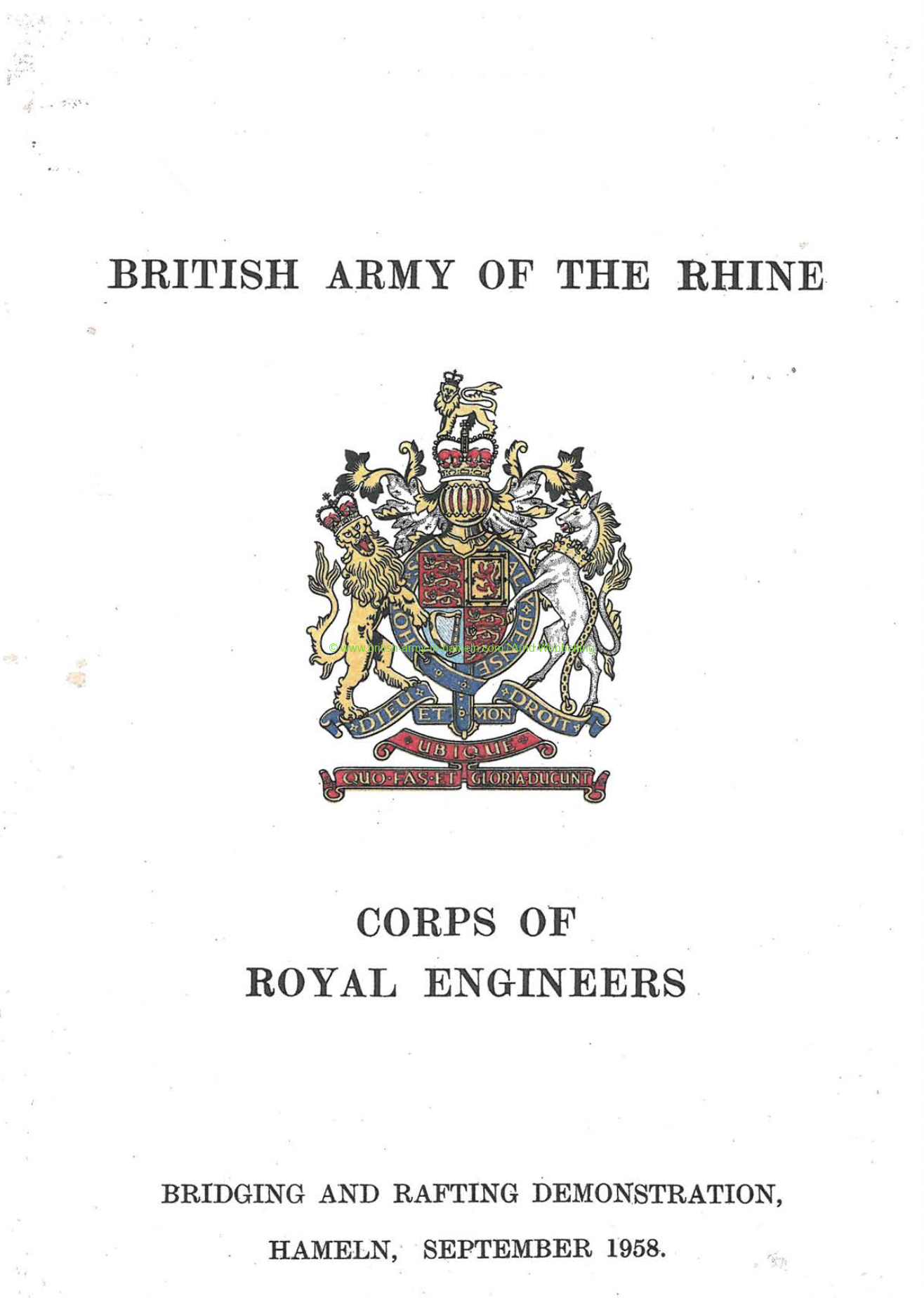
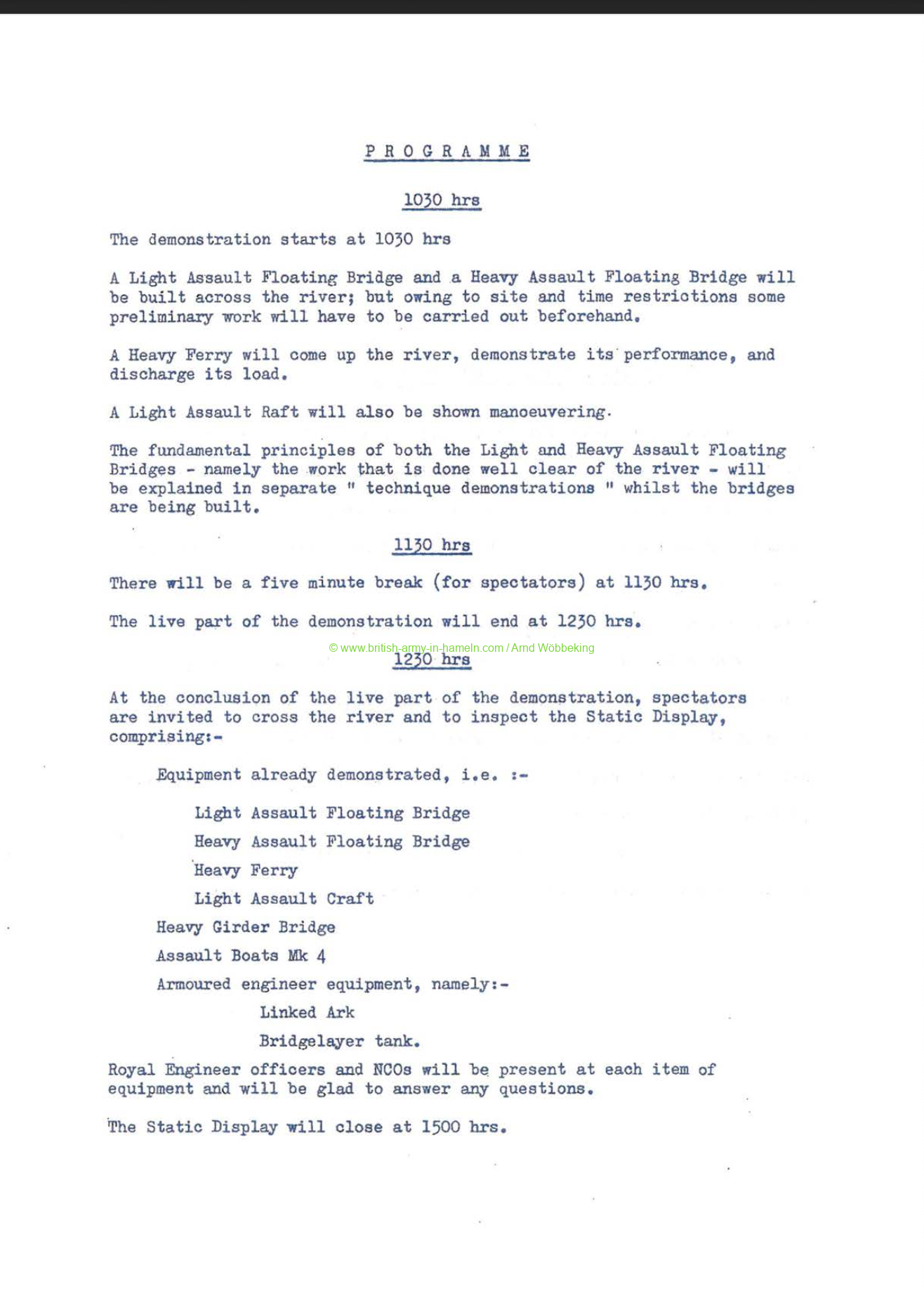
The photo from Local-newspaper Dewezet shows a LAFB, built over the Weser!
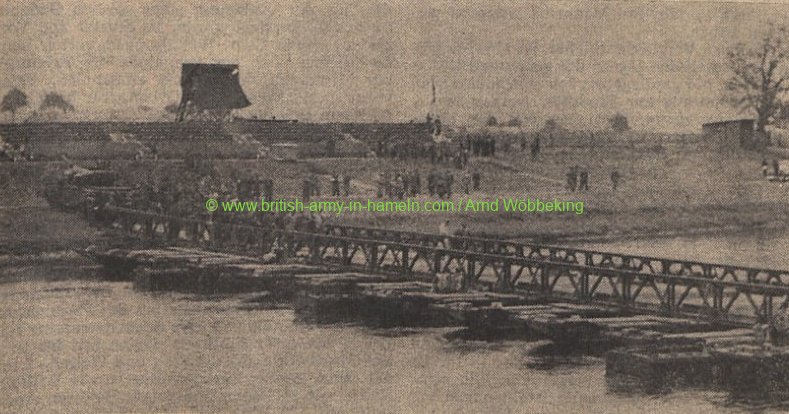
The photo now shows the 125 (Bridge) Coy RASC, maybe during this demonstration.
Source: Richard Keyte
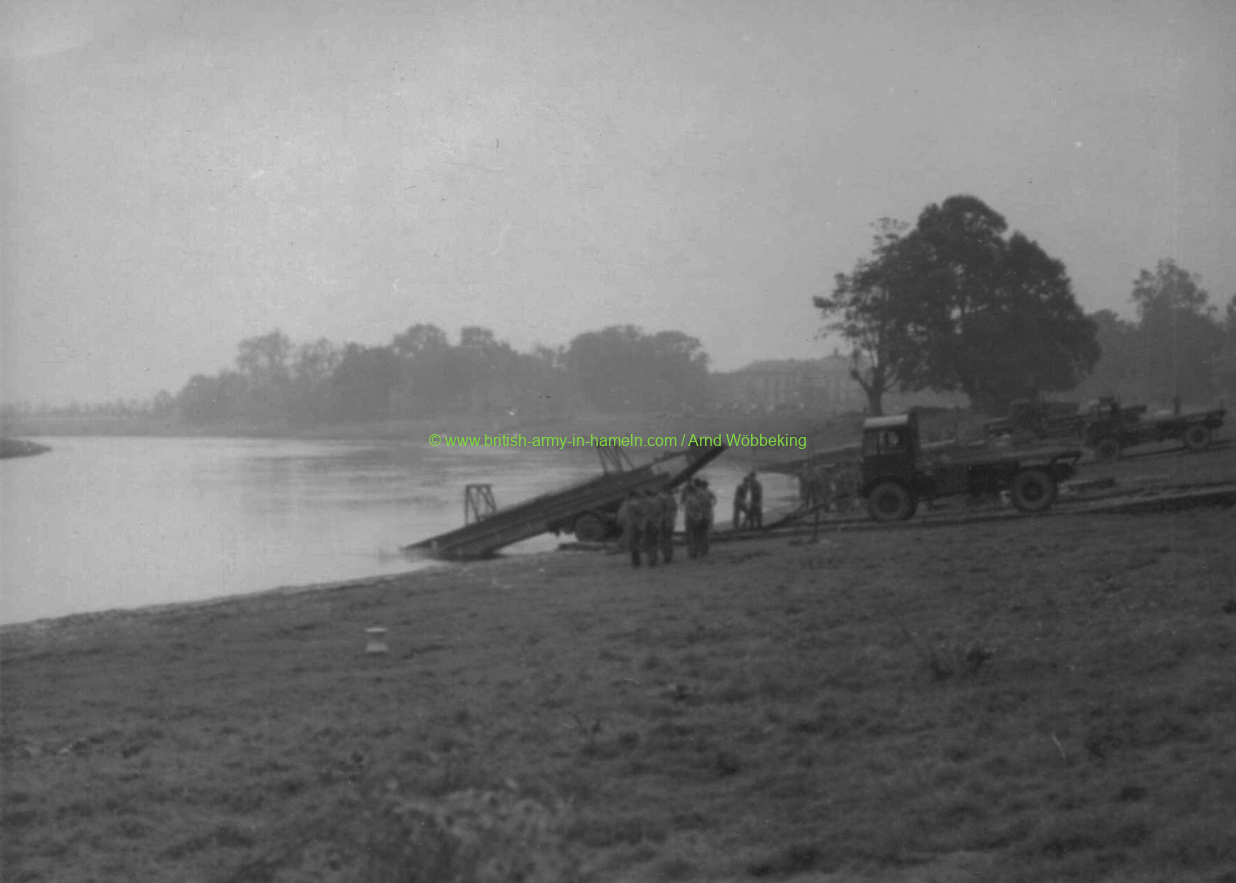
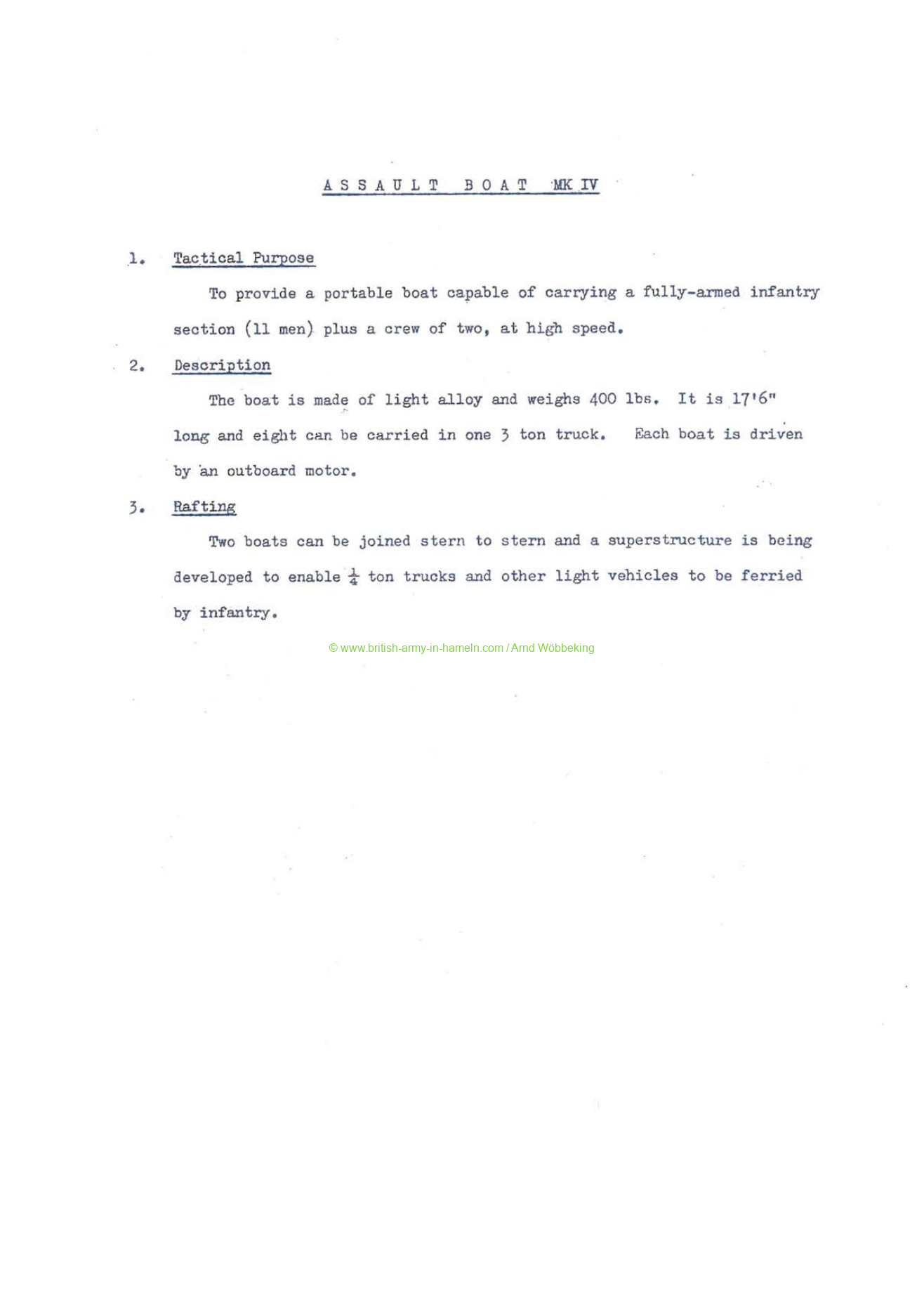
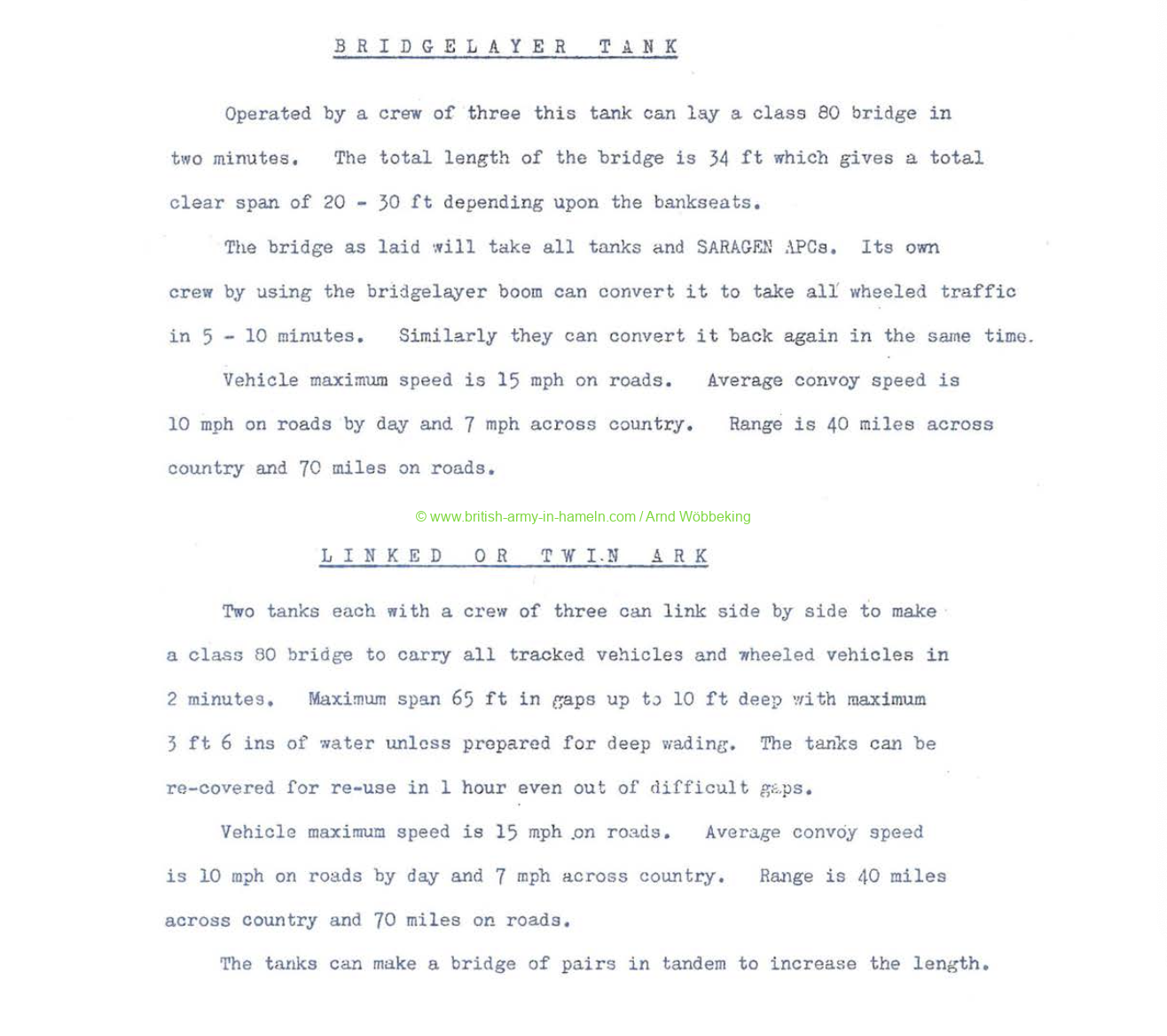
For illustration, a Churchill ARK on a land march during a maneuver in the 1960s, photographed by Michael Neumann.
Zur Anschauung ein Churchill ARK auf Landmarsch während eines Manövers in den 60er Jahren aufgenommen von Michael Neumann.
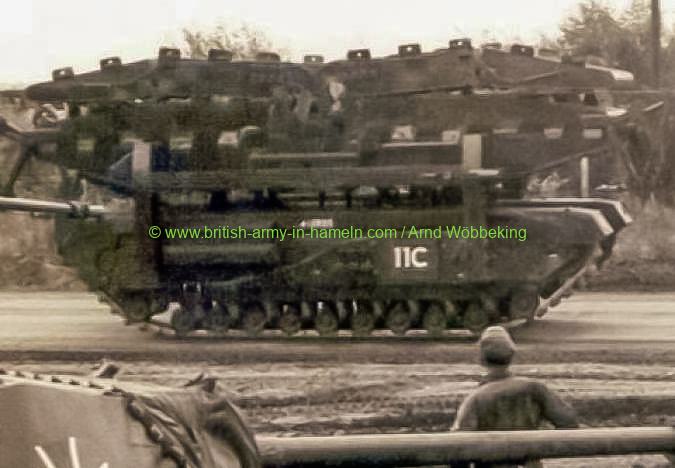
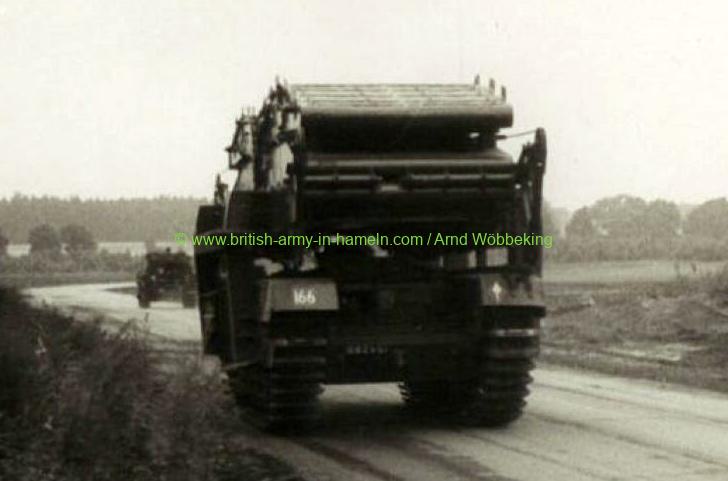
The functionality is explained with pictures taken during an exercise in the Einbeck basin. The chassis is a Centurion. The vehicle drives completely into the ditch or riverbed, unfolds its out-riggers and thus becomes a bridge. (All photos by Michael Neumann and Eckhard Uhde)
Die Funktionsweise erklärt an Bildern während einer Übung im Einbecker Becken. Das Fahrgestell ist hier ein Centurion. . Dabei fährt das Fahrzeug komplett in den Graben oder das Flussbett, klappt seine Ausleger auf und und wird somit zu einer Brücke. (Alles Fotos Michael Neumann und Eckhard Uhde)
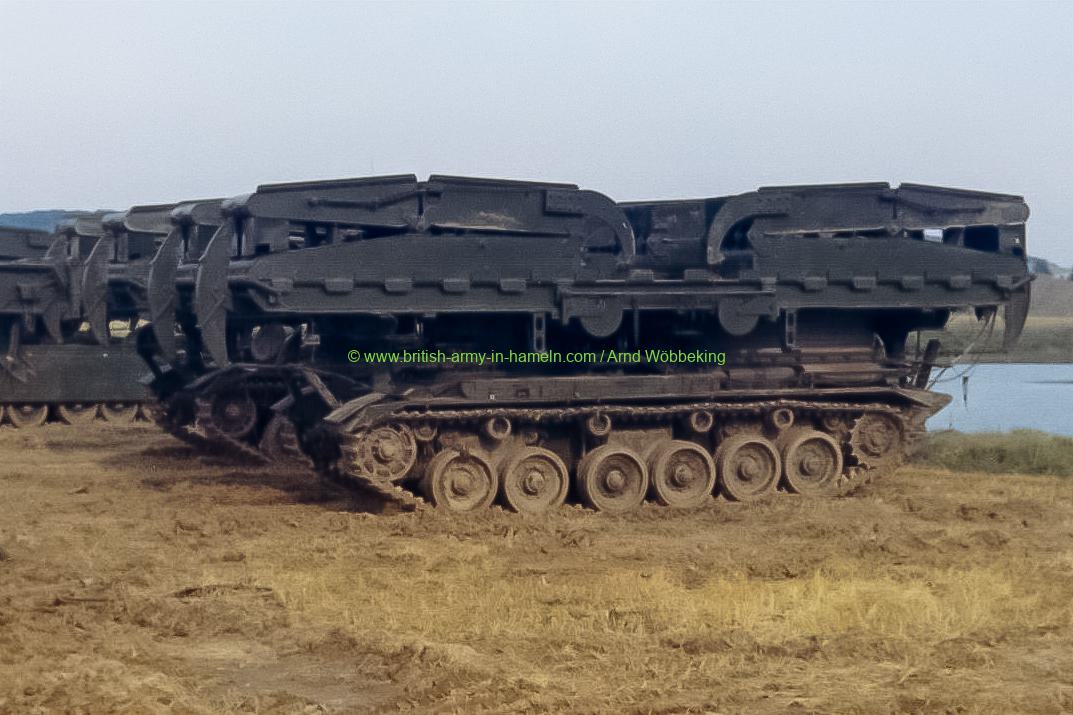
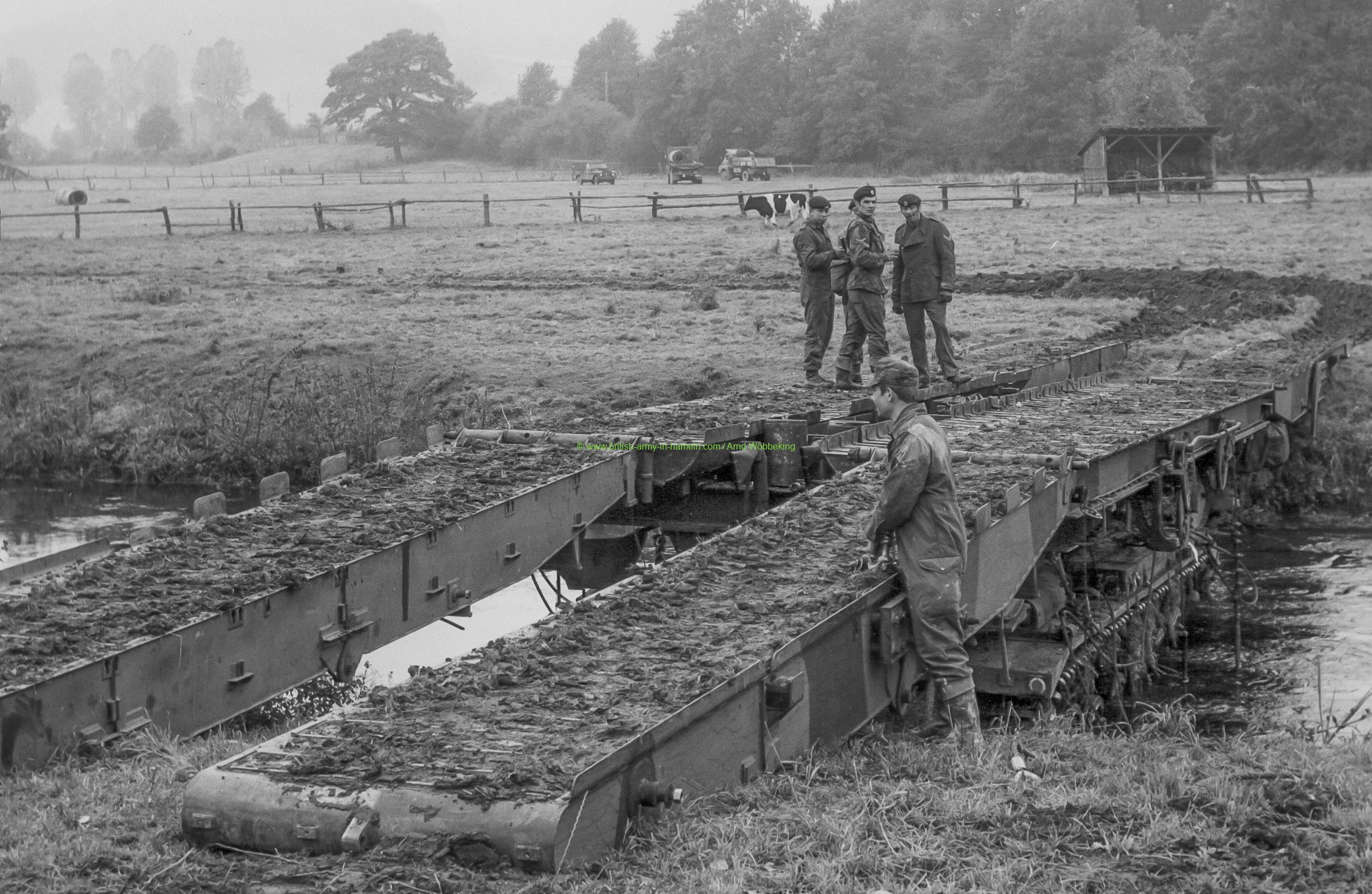
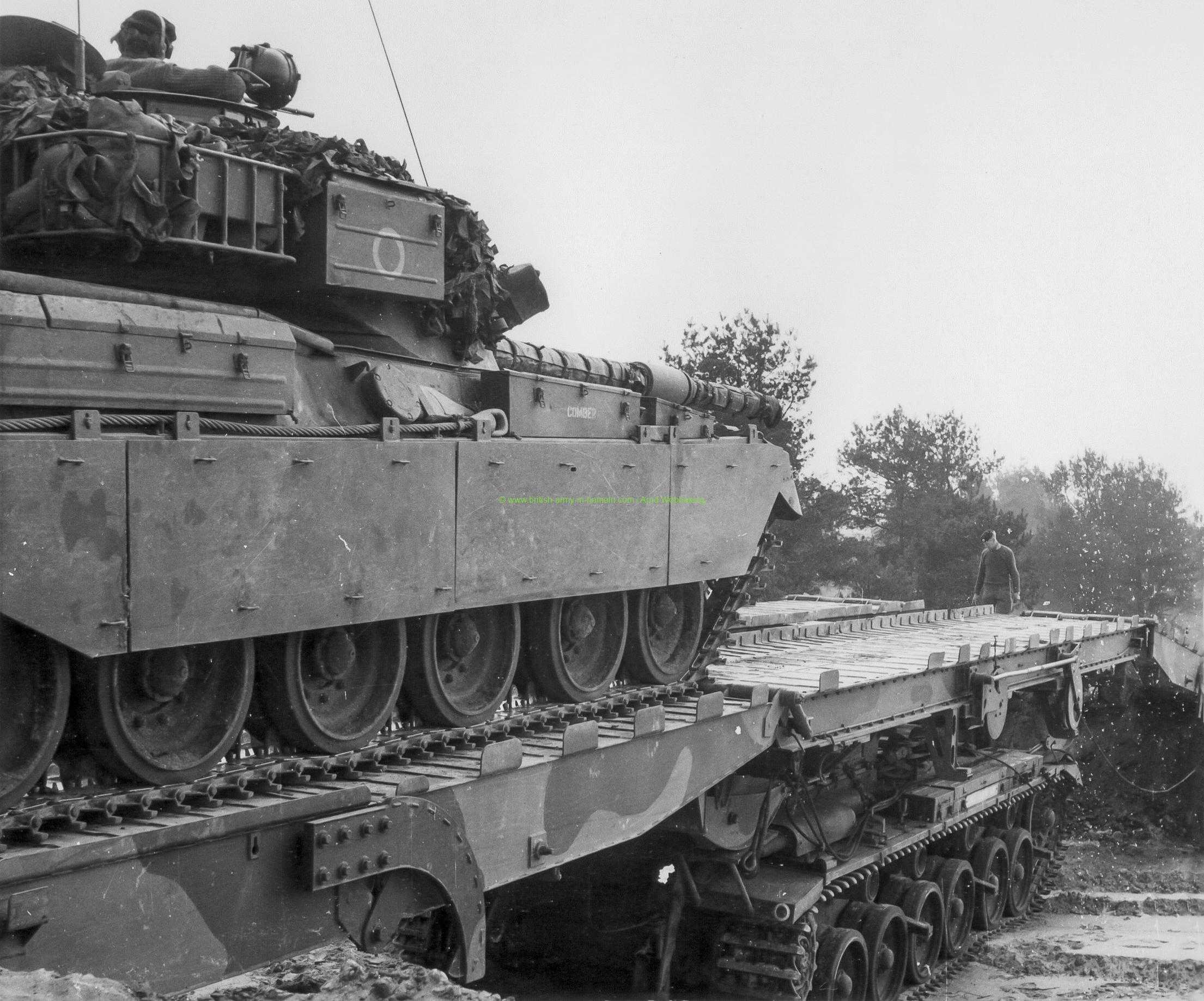
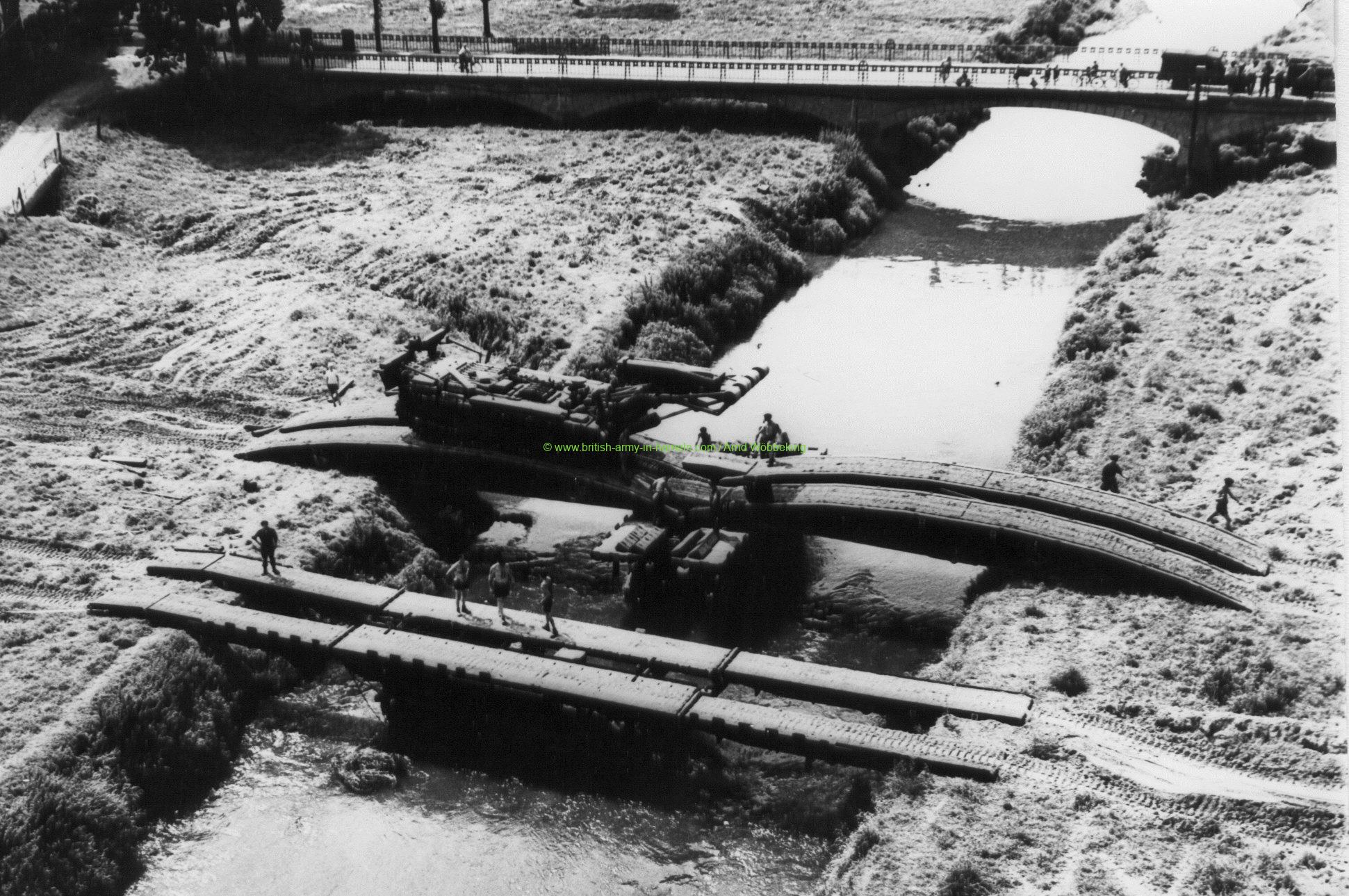
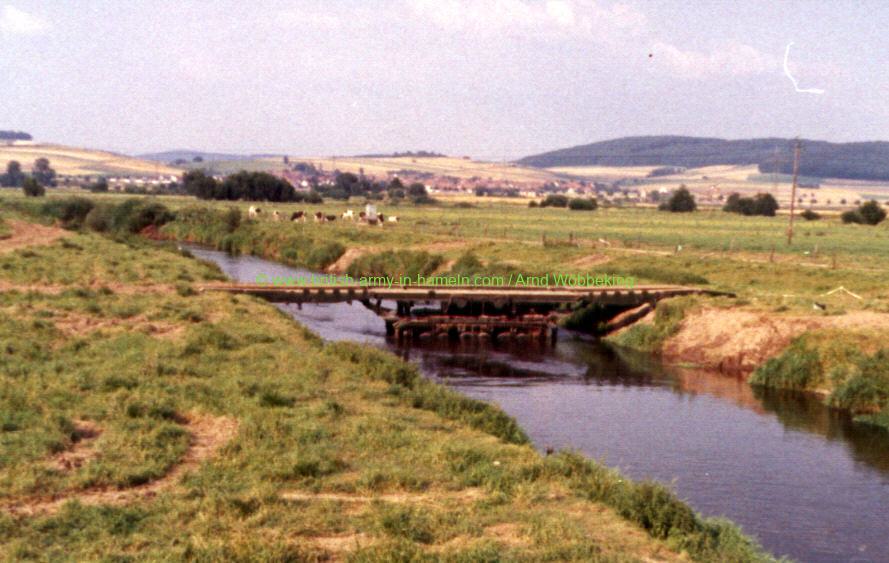
Last updated: Oktober 26, 2025 at 17:28 pm


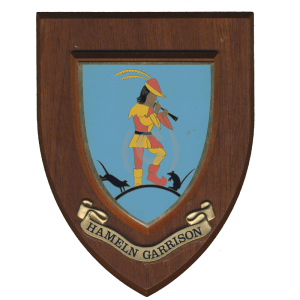


Last comments